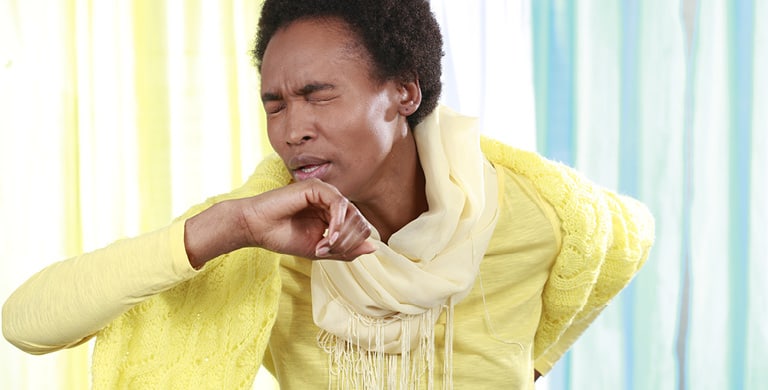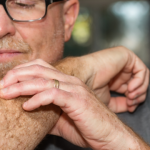Worldwide, tuberculosis (TB) is the second leading infectious killer after COVID-19 (above HIV and AIDS). Every year, TB claims the lives of nearly 1.5 million people around the world. Experts at the World Health Organization (WHO) warn that these numbers could rise in the coming decades. Currently, about 2 billion people, or a quarter of the global population, are infected with TB, with a new infection happening every second. TB is present in all countries and age groups, but it is curable and preventable.
What is TB?
What is TB?
Tuberculosis (TB) is a serious, infectious disease caused by bacteria. It’s a significant health issue in South Africa, particularly in the Western Cape. Although TB is highly infectious, it is curable and can be treated inexpensively with a specific course of antibiotics. About one in ten people who are infected will develop the disease. Without treatment, an infected person can spread TB to 10 to 15 others each year. In South Africa, 90% of TB cases are treatable, but only half are successfully cured.
TB primarily affects the lungs but can also impact other body parts, like the brain, kidneys, or spine. When TB affects areas other than the lungs, it is not infectious. However, untreated TB can be fatal.
Signs and symptoms of active pulmonary TB
- A cough lasting two or more weeks, possibly with bloody sputum, that worsens over time.
- Unintended weight loss.
- Slight fever and night sweats.
- Loss of appetite.
- A general feeling of tiredness and weakness.
Symptoms of TB in other parts of the body vary depending on the area affected.
How TB spreads
TB spreads through the air when infected people cough, sneeze, speak, or spit. These droplets can linger in the air for several hours. However, it’s unlikely to catch TB just by walking past an infected person on the street. The risk comes from prolonged exposure, such as living or working closely with someone who has active TB.
Diagnosing TB
Previously only individuals who presented with TB symptoms and those in vulnerable groups who were more likely to get TB were tested. But with Targeted Universal Testing for TB (TUTT) as recommended by the National Department of Health, individuals are now tested who have been in close contact with a person diagnosed with TB as well, regardless of their symptoms. This is enabling very early diagnosis and initiation of treatment and will save many lives over the years.
When diagnosing TB, a patient visits a primary health care clinic where they are asked to provide a sputum (phlegm or mucus) sample, followed by another sample the next day. The results are typically ready within 48 hours, and only one positive result is needed to confirm a TB infection.
In addition to sputum tests, an X-ray might be conducted, or a Tuberculin skin test may be administered. During this test, a small amount of testing fluid, known as tuberculin or PPD, is injected under the skin of your lower arm. A small lump at the injection site indicates a positive reaction, suggesting TB infection. However, it’s important to note that a TB infection doesn’t always mean you have active, infectious TB. Many people with positive tuberculin tests do not have active TB.
If the TB infection is severe, the patient will be referred to a specialist TB clinic for further care. Fortunately, clinics and hospitals throughout South Africa offer free testing for both TB and multi-drug-resistant TB (MDR TB).
TB Treatment
Treating TB involves using antibiotics to kill the bacteria. It’s crucial to complete the entire course of treatment, which typically lasts six to eight months, to ensure a full recovery. Stopping treatment early can lead to multi-drug-resistant TB, making it much harder to cure.
Treatment phases
- Intensive phase: This phase involves taking a combination of four different drugs in one tablet, five days a week, for two to three months.
- Continuation Phase: During this phase, two drugs are taken, again five days a week, for four to five months. If you experience any side effects from the medication, it’s important to return to the clinic for assistance.
Drug-resistant TB is more challenging and costly to treat. To help patients stick to their treatment plan, some clinics use a method called Directly Observed Therapy (DOT). In this approach, a nurse or healthcare professional administers the medication, ensuring you don’t forget to take it. This method also provides valuable support and encouragement throughout the six- to eight-month treatment period.
Prevention
To prevent TB, it’s recommended that babies receive the BCG (Bacille Calmette Guérin) vaccine. TB meningitis is a severe illness in children and can be life-threatening. If symptoms, such as neck stiffness, are noticed, it’s essential to take the child to a clinic immediately.
Understanding Multidrug-Resistant TB (MDR TB)
Multidrug-resistant TB, or MDR TB, occurs when a strain of tuberculosis can’t be treated with two or more of the primary drugs commonly used to combat the disease. This resistance often develops due to incomplete treatment—perhaps because individuals miss doses, don’t complete their medication course, or are prescribed incorrect treatment plans. Such scenarios allow the bacteria to mutate, becoming resistant to the first-line TB drugs. Alarmingly, as MDR TB spreads quickly, some experts argue that ineffective treatment might be more harmful than no treatment at all.
Fortunately, MDR TB can still be treated, but it requires a commitment to at least two years of therapy using second-line medications, which can sometimes be quite toxic. Some strains of MDR TB are even resistant to three or more of the six classes of these second-line drugs. Without proper treatment, MDR TB can progress to extreme or extensively drug-resistant TB (XDR TB), a form that is nearly incurable with the limited treatment options available and can be life-threatening.
Always remember, completing your TB treatment as prescribed is crucial to preventing the development of drug-resistant strains.
The connection between TB and HIV
The HIV epidemic has significantly increased the number of tuberculosis (TB) cases, as TB and HIV have a dangerous interplay that accelerates the progression of both diseases. Approximately one-third of individuals living with AIDS also have TB. This is because HIV weakens the immune system, making it harder for the body to fight off TB bacteria. Consequently, many people who are HIV-positive and newly infected with TB quickly develop active TB.
Understanding this relationship highlights the importance of managing both conditions effectively to improve health outcomes.
Consult with an Intercare healthcare professional if you have signs and symptoms of TB. Early detection saves lives. https://www.intercare.co.za/bookings
Did you know?
- In Finding Neverland, Kate Winslet’s character suffers and later dies of TB.
- In Moulin Rouge, Satine, played by Nicole Kidman, contracts TB and dies.
- Frédéric Chopin (born: March 1st, 1810, died: October 17th, 1849) died of pulmonary TB in 1849 at age 39. Historical records indicate episodes of haemoptysis during performances. (Source: Wikipedia)
Useful contacts:
Useful contacts
The following private organisations can also help:
- TB Care Association: 021 692 3027
- Santa Cape Town:021 696 5128
- Santa Western Cape: 021 715 8901
- TADSA (TB alliance Dots Support association): 021 918 1556
Sources:
Sources:
- ncbi.nlm.nih.gov/pubmed/10134066
- tbfacts.org/tb-statistics-south-africa/
- hst.org.za/publications/District%20Health%20Barometers/9%20(Section%20A)%20Tuberculosis
- who.int/news-room/fact-sheets/detail/tuberculosis?locale=en
Reviewed: September 2024












